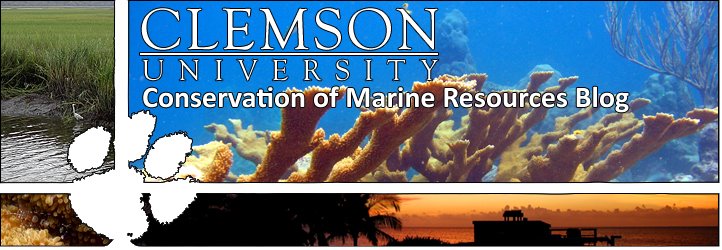 The summer of 2017 was one of the busiest and life changing times of my life. Never have I been more exhausted in my life, and I wouldn't take it back for the world. From May 27th to July 22nd, I was blessed with the opportunity to work doing field research under the summer CI stipend with the Conservation of Marine Resources team. During this stay in the Florida Keys, the team and I worked on many projects in order to gather as much data for research as possible. One major project that we took on involved coral transplants that we placed on eight different reef sights. Four separate hard corals were placed in random order along a 50 meter transect on each site. Six of each type of coral were transplanted on each site, adding up to about 200 coral transplants that we did over the course of a week.
The summer of 2017 was one of the busiest and life changing times of my life. Never have I been more exhausted in my life, and I wouldn't take it back for the world. From May 27th to July 22nd, I was blessed with the opportunity to work doing field research under the summer CI stipend with the Conservation of Marine Resources team. During this stay in the Florida Keys, the team and I worked on many projects in order to gather as much data for research as possible. One major project that we took on involved coral transplants that we placed on eight different reef sights. Four separate hard corals were placed in random order along a 50 meter transect on each site. Six of each type of coral were transplanted on each site, adding up to about 200 coral transplants that we did over the course of a week. We also studied several different organisms, including spiny lobsters, damselfish, and parrotfish. After our work this summer, the stoplight parrotfish have a special place in my heart. My individual project for this creative inquiry involves studying the influence of parrotfish as herbivores on the reefs of the Florida Keys. We know from past data collections the particular diet of the stoplight parrotfish, however I wanted to see just how their territories are shaped by their diet and the structure of the reef, as well as how female stoplight parrotfish play a role on the reef. To do this, we followed supermale and female stoplight parrotfish for ten minute time periods, dropping flags as they turned in order to mark where their territories end. We also recorded their size, any notable behaviors, and other parrotfish they came into contact with. In order to study their territory sizes and movement patterns on a more accurate scale without diver interactions, we placed acoustic tags within several supermale stoplight parrotfish that will send out signals to receivers throughout a particular area of reef sites. We have been analyzing the data we've collected so far with this project throughout the semester, and will continue to do so over the following year.
We also studied several different organisms, including spiny lobsters, damselfish, and parrotfish. After our work this summer, the stoplight parrotfish have a special place in my heart. My individual project for this creative inquiry involves studying the influence of parrotfish as herbivores on the reefs of the Florida Keys. We know from past data collections the particular diet of the stoplight parrotfish, however I wanted to see just how their territories are shaped by their diet and the structure of the reef, as well as how female stoplight parrotfish play a role on the reef. To do this, we followed supermale and female stoplight parrotfish for ten minute time periods, dropping flags as they turned in order to mark where their territories end. We also recorded their size, any notable behaviors, and other parrotfish they came into contact with. In order to study their territory sizes and movement patterns on a more accurate scale without diver interactions, we placed acoustic tags within several supermale stoplight parrotfish that will send out signals to receivers throughout a particular area of reef sites. We have been analyzing the data we've collected so far with this project throughout the semester, and will continue to do so over the following year.Being in the Keys this summer has taught me an incredible amount about the ocean and about myself. I learned so much about the interactions between reef species just by my observations alone. I now can accurately identify several species of fish, some even just by their shapes. I've gained the ability to tell apart common coral and sponge species throughout the Florida reefs, and I now have a better understanding of how different parts of the ocean interact as a whole. I feel in love with the ocean this summer. Not only was this an amazing experience for my future career, but it was a once in a lifetime opportunity that has cemented my passion for the sea and the creatures within it. I could not be more thankful for this creative inquiry and the people within it that continue to shape my life within the lab.























